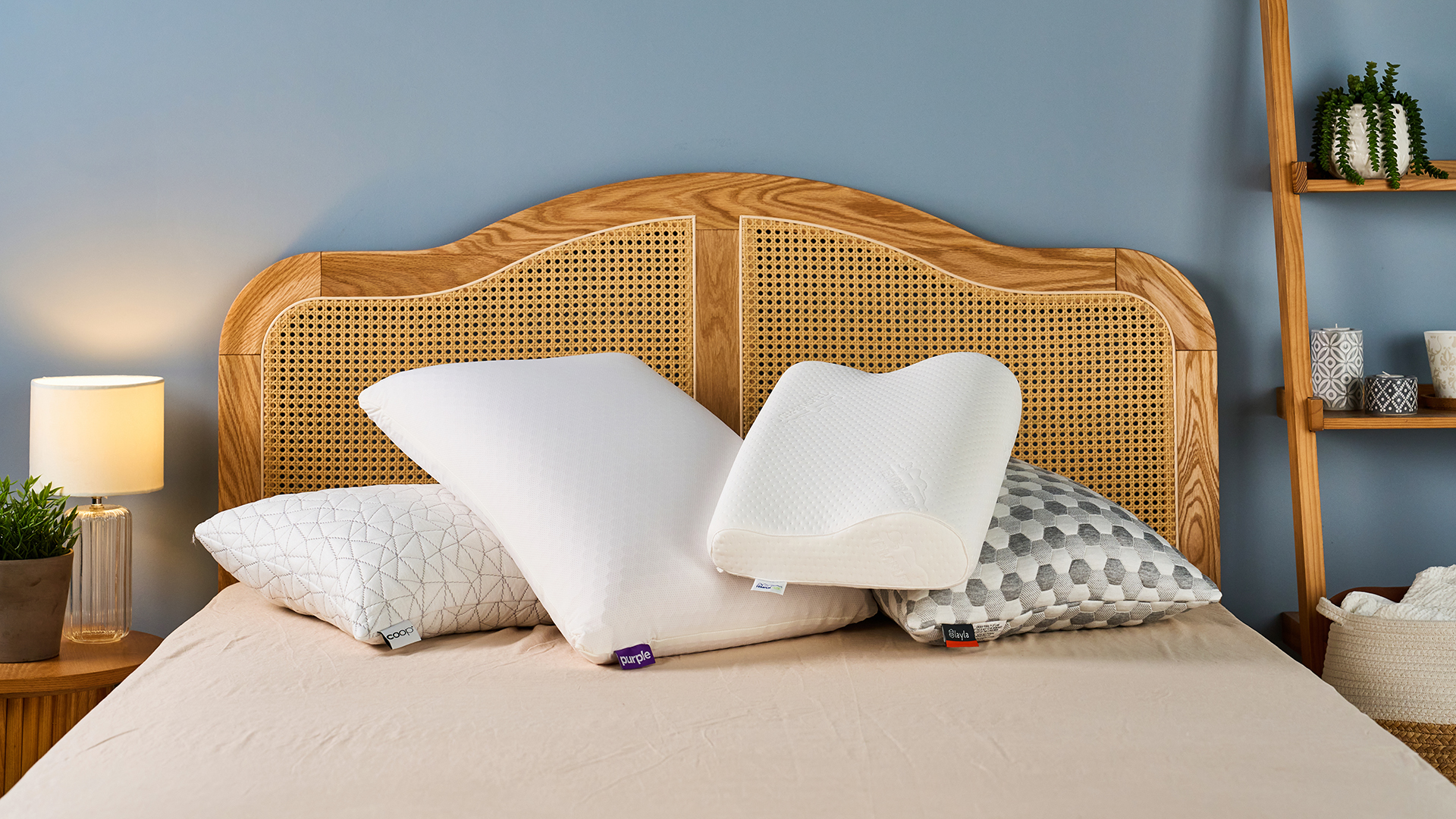Pillow loft explained: How to choose the right height for your sleep and body position
Low, mid or high — this is your guide to selecting the ideal pillow loft for your sleep

Pillows differ in design and build to suit all manner of sleep requirements. While it may seem trivial, lying on the wrong pillow can trigger or worsen neck pain and shoulder aches, having the potential to ruin your sleep.
To avoid this, it’s wise to pay attention to one particular feature when shopping for your ideal head rest: pillow loft. This is the pillow's height, and it can have a huge impact on the support you'll feel from it.
We test the best pillows of 2025 and pillow loft is an important parameter to consider, making each pillow suitable to certain sleep styles, needs and positions. Here's what that means and how to choose the right loft for you.
What does pillow loft mean?

As we've mentioned, pillow loft refers to how tall a headrest is. This is important to ensure your head, neck and shoulders are in a healthy alignment, which means improved blood circulation, reduced strain on pressure points and better breathing, leading to a more restorative night's sleep.
Lying on a pillow that's too low or tall for your sleeping position can impact the balance of your spinal alignment, which can result in neck pain or aches. If you do not properly tend to this at the right time, this can lead to headaches and even serious issues like pinched nerves and injuries.
Top bedding manufacturers agree that the average pillow loft falls between four and seven inches but this, once again, depends on a variety of factors.
What pillow loft do you need?
Low-loft pillows
A low-loft pillow is one that measures up to three inches in thickness. This is an ideal choice for stomach sleepers as it effectively prevents the head from tilting upwars and thereby minimizes the potential risk on your neck muscles, when lying on your stomach.
This is often a position least recommended by both chiropractors and sleep experts because of the strains it puts on various parts of the body, including the neck, shoulders and back.
Stomach sleepers are, therefore, advised to opt for a soft low-loft pillow since a firmer headrest can compromise the alignment and shift your neck into an uncomfortable angle.
Medium-loft pillows

Pillows measuring anywhere between three to five inches are regarded as medium-loft.
Both back sleepers and some side sleepers can benefit from a medium-loft pillow since it stops your head from dipping into your mattress, causing misalignment.
However, the question of whether you should opt for a medium-loft pillow (or something taller) also largely depends on your body type.
If you're a side sleeper with broad shoulders and a larger frame, it is advisable to size up to a high-loft pillow, simply because you need that extra support.
High-loft pillows
Anything taller than five inches would be classed as a high-loft pillow. This is a perfect option for side sleeping, since anything lower can dip your head which can interfere with your body's natural alignment.
A high-loft pillow, on the other hand, can bridge the gap between your ears and shoulders when lying on your side.
It can work well to provide cradling and pressure relieving support to your head, neck and shoulders, reducing any muscle strain when you shift to your side.

What is an adjustable pillow loft and who needs it?
As the name suggests, adjustable loft pillows feature a customizable height and firmness. This can be ideal for combination sleepers who tend to shift between two or more positions during the night.
Adjustable loft pillows are usually crafted from materials like memory foam, microfiber and shredded latex, with a design that enables you to add or remove the fill to suit your sleeping preferences.
A good example would be the Coop Original Adjustable pillow we reviewed, made from a blend of both memory foam and microfiber. It comes with an extra half-pound bag of fill to let you decide your ideal pillow loft and firmness.

What to consider when choosing the right pillow for you
While pillow loft is a crucial element, there are other factors that you need to consider during your search for your ideal pillow.
We have listed the top three here, but you can refer to our guide to how to choose the right pillow for your sleep position if you want to know more.
1. Materials
Pillows are made from a variety of materials ranging from organic cotton, wool, down and latex to synthetic polyester fiber and down-alternative fill. Why does this matter? The feel and comfort of a pillow is determined by the materials it is made of.
Wondering whether you should opt for memory foam or latex? If you're someone who values a plush and cloud-like pillow, down or memory foam will be ideal.
Prefer the springiness of some of the best organic mattresses and want the same sensation for your pillow too? Latex is the right pick in that case, thanks to its responsive, bouncy feel.
2. Sleep needs
Are you prone to overheating during sleep? Do you often struggle with allergies? These are the kind of questions to ask yourself when trying to assess your sleep needs.
Different materials used in pillows affect your sleep in different ways. Memory foam, for instance, is notorious for trapping heat. So, the best fill for hot sleepers will be something more natural and breathable, like wool or down. Or, you can opt for pillows that incorporate specific cooling technology, like GlacioTex.

Similarly, some sleepers will find certain materials worsen their allergies, especially as we're in such close contact with them. Hypoallergenic pillows, often made from wool or silk, are made to resist dust mites and other allergens.
By identifying your particular sleep needs and finding the pillow that best caters to them, you'll be in with a much better chance of achieving properly restorative sleep every night.
3. Sleeping position
A pillow can make or break your sleep. As we've mentioned earlier, your sleeping position is a top factor in determining the type of pillow for your sleep.
There are three main sleeping positions – side, back and front – and many people are combination sleepers who change position throughout the night.
Just as the best mattresses of 2025 are designed to suit specific sleeping positions and body types, like the Helix Midnight Luxe being the best mattress for side sleepers, pillows too can support your sleep style. For example, the Nest Bedding Easy Breather Side Sleeper pillow we reviewed.
Sign up to get the BEST of Tom's Guide direct to your inbox.
Get instant access to breaking news, the hottest reviews, great deals and helpful tips.

Becky is a Sleep Staff Writer at Tom’s Guide covering all things sleep-related including product reviews, research studies, news and explainers. She works on specialist bedding content and is responsible for buyer’s guides like the best pillows for all sleepers and best mattress protectors focusing on popular brands such as Tempur-Pedic, Avocado, Coop Home Goods and more. Becky is a PPA accredited journalist who is keen to explore the intricacies of sleep, its effects on skincare, mental wellbeing and work performance. While not thinking of sleep, she can be seen reading in cosy bookshops or learning about global food culture.
You must confirm your public display name before commenting
Please logout and then login again, you will then be prompted to enter your display name.
